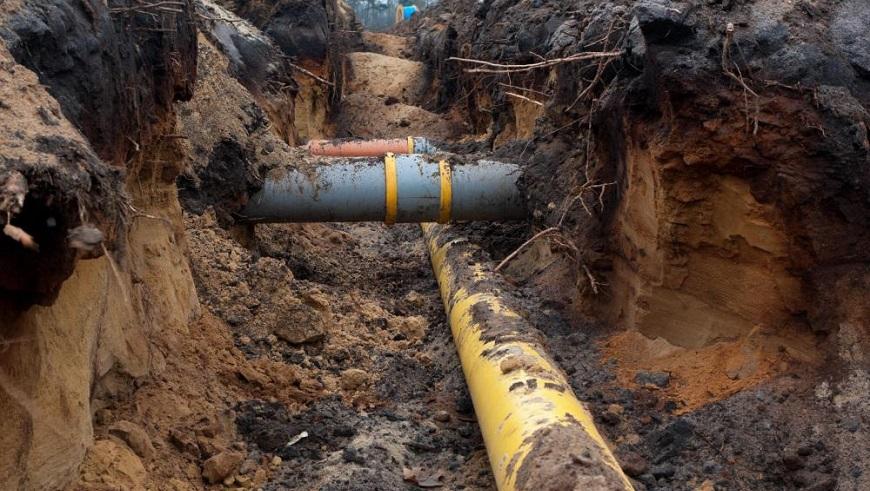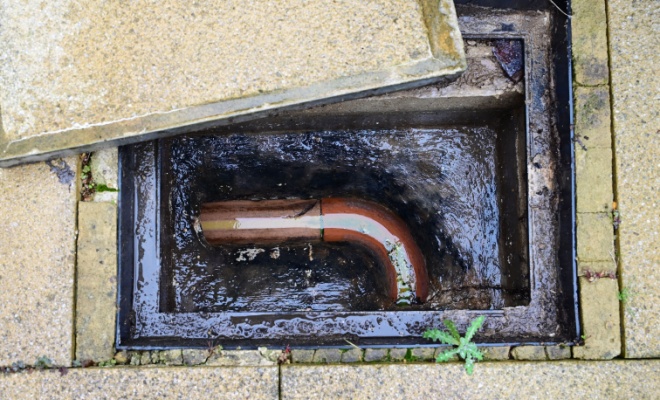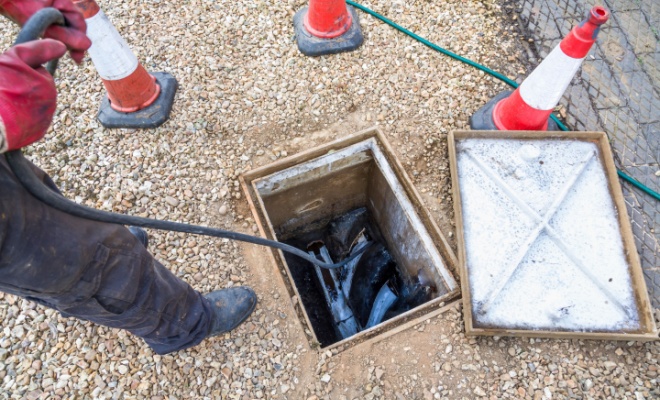Drain Relocation Cost
Last updated 24th July, 2024
Do you need to know cost of moving your house drains?
It's very possible that an extension or conservatory plan might mean shifting your house drainage in some way.
Whether it's moving a manhole or other drainage, this article covers all you need to know about moving drains so you don't need to worry about building over drains! We explain what's involved, the timescales, the cost of materials, labour fees and much more.
So, lets get started!

How Much Does It Cost to Relocate a Drain?
The average cost of moving a drain is around £1500 - £7500, dependant on the type of drainage system that you have. There are many factors affecting the cost of relocating a drain including the distance, size of the drain and the surrounding land.
Another varying factor of your overall costs will be the fees charged by your local authority. The application fee for building near a drainage system varies a lot depending on your location. How much the application costs depends on the diameter of your sewer pipe. The larger the diameter the more the fee typically. Whether the property is residential or commercial also has an effect on this fee.

You must also consider the costs involved with the project overall. You may need landscaping and gardening work to restore the land where the drain has been moved to and from.
Your drainage specialist will usually work at a cost of around £150 per day.
Drain Relocation Prices
Below are some estimated prices for hiring a drain specialist to move your drain:
| Description | Avg. Cost | Duration |
|---|---|---|
| Drainage survey and mapping | £300-£400 | 3-4 hours |
| Application to build near drain | £200-£1300 | Dependant on local authority |
| Build a soakaway underneath lawn/driveway | £700-£1000 | 1-2 days |
| Relocating drain from main sewage supply | £4000-£5000 | 5-8 days |
Table of Contents
Cost Breakdown Calculator For Moving a Drain
Individual costs of relocating a drain from the main supply - Total Cost: £4500
Materials
£2250
Tradesmen
£1800
Waste Removal
£450
A Complete Guide to Moving a Drain
Drains and manhole covers are probably not something that we give much thought to. However, if you want to extend your kitchen or build a conservatory, you may have a drain that needs to move before work can get underway. If you are thinking about moving a drain, read this useful guide to learn about what you can expect if you decide to relocate your drain.
What is Involved in Moving a Drain?
It is a surprisingly common problem. You are in the middle of planning your new, exciting kitchen extension or conservatory when you realise that there will be an unsightly drain or manhole cover in the midst of the space. You don’t want a drain or manhole cover in your revamped kitchen or newly-built conservatory so you are now tasked with the challenge of moving the drain to a location outside of the area that you plan to build on.
How do you relocate a drain or manhole cover? Moving a drain can be a little more complicated than it may seem. We are so used to seeing drains and manhole covers that it is easy to forget that drains lead to complex networks of sewers, so moving a drain may need to involve your local water authority.
Main Drains Vs. External Drains
The cost of moving a drain may be impacted heavily by where the drain is located and which type it is. Main drains, located largely underneath houses, can be a trickier proposition, because the building's foundations and flooring become an awkward obstacle.
In this scenario, you'll need to pay for a drainage specialist to plan the project, which can cost up to £500. The subsequent work is likely to be more expensive than a simpler external drain to account for the logistical difficulties.

Moving outside drains is typically a less involved process, primarily because the excavation is simpler. Still, this is no simple DIY job, so be sure to approach the appropriate professionals for guidance, and remember to get the required permissions! We'll talk about those in the next section.
What Should You Expect if You Are Planning to Move a Drain?
Depending on the type of drain that you have, the process to move your drain could be lengthy, so it will save a lot of hassle to be clear about the steps involved from the start. Moving your drain will mean that your drainage system will need to be rebuilt in the new location. Easy right? Unfortunately not.
We forget that drains are long networks that can run deep underground. It can be surprisingly difficult to get the depth of a new drainage system right. If the new drainage system is not positioned at the right depth, both you and your neighbours could face long-term drainage issues.
Worse still, you will also need to begin the process of seeking permission to do the work all over again. A costly mistake that you will want to avoid.
As a result, any work to move your drain is governed by UK building regulations and your local water authority. In most cases, you will need to seek permission from your local water authority if you want to move a drain. Depending on your location and the size of the drain this itself will be between £200 and up to £1300.
According to UK Building Regulation H4, if you are building within 3m of a public sewer or lateral drain, you will need to get approval from your local water authority before you can carry out the work.
What does this mean for you?
It means that the first thing you will need to do is to contact your local water authority to find out what type of drain you have. Many drains are connected to multiple properties, forming a common drain. These common drains are controlled by the local water authority and many more building regulations.
To seek permission from your local water authority to move a drain you will need to make an application in the first instance. Many local water authorities have severe restrictions on the type of work that can be done. If the work is approved under a build over agreement, you will have to adhere to the terms of the agreement. Contact your local water authority for further information.
During the work to move your drain, you may find that you need further tradesmen, such as a landscaper or gardener to repair any damage. You will want to include these additional jobs when working out the overall price for your project.
Anything else I need to know?
This job can get costly and complex. Additionally, there are the potential dangers of flooding from inadequate drainage. It would be advisable to leave this to trained and experienced specialists. Make sure that your drainage specialist is fully equipped to do the work and has a thorough understanding of your drainage system.
Remember that before you can carry out any work, you are very likely to need to seek approval from your local water authority. This process can take many months and you will incur costs that will increase your final budget.
Things can go wrong when you are relocating a drain, so there is a possibility that you may experience higher costs from the approval process or need to employ additional tradesman; thus, it would be wise to budget for the possibility of these events whilst you are considering the overall price.
FAQs
All of these elements can combine to create Hydrolytic Degradation, ie. the deterioration of your PVC piping. If your PVC piping is damaged, there are epoxy coatings, pipe liners and more that can be used to repair your pipes.
Ultimately, PVC is the most popular material for home waste line pipes and drains, so the possibility of deterioration should be considered within the context of the long life of the material.
Sources
https://www.planningportal.co.uk/permission/common-projects/drains-and-sewers/planning-permission
https://premierdrainagesolutions.com/moving-a-sewer-to-build-your-extension-everything-you-need-to-know/






